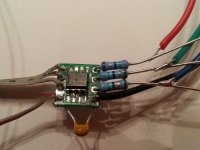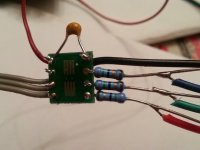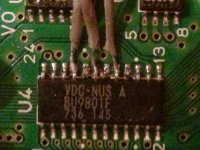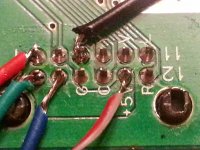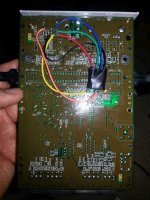BladeDancer314
Windjammers Wonder

- Joined
- Dec 8, 2013
- Posts
- 1,399
ok so I decided to RGB mod my N64 but I've ran into an issue.
after I hooked up everything (I'm using the RGB amp) I'm getting a black and white picture when I use a scart rgb to component transcoder and when I try straight RGB on my PVM I also get black and white and the PVM has trouble syncing.
also, if I try to use regular composite the picture is really, really dark.
if I cut the power to the amp the composite picture goes back to normal (brightness wise).
when I'm getting RGB out thru the amp all 3 lines are putting out around 1.8 volts at all times
the scart cable has capacitors in it (220uf) on each of the RGB lines
after I hooked up everything (I'm using the RGB amp) I'm getting a black and white picture when I use a scart rgb to component transcoder and when I try straight RGB on my PVM I also get black and white and the PVM has trouble syncing.
also, if I try to use regular composite the picture is really, really dark.
if I cut the power to the amp the composite picture goes back to normal (brightness wise).
when I'm getting RGB out thru the amp all 3 lines are putting out around 1.8 volts at all times
the scart cable has capacitors in it (220uf) on each of the RGB lines
Last edited:



